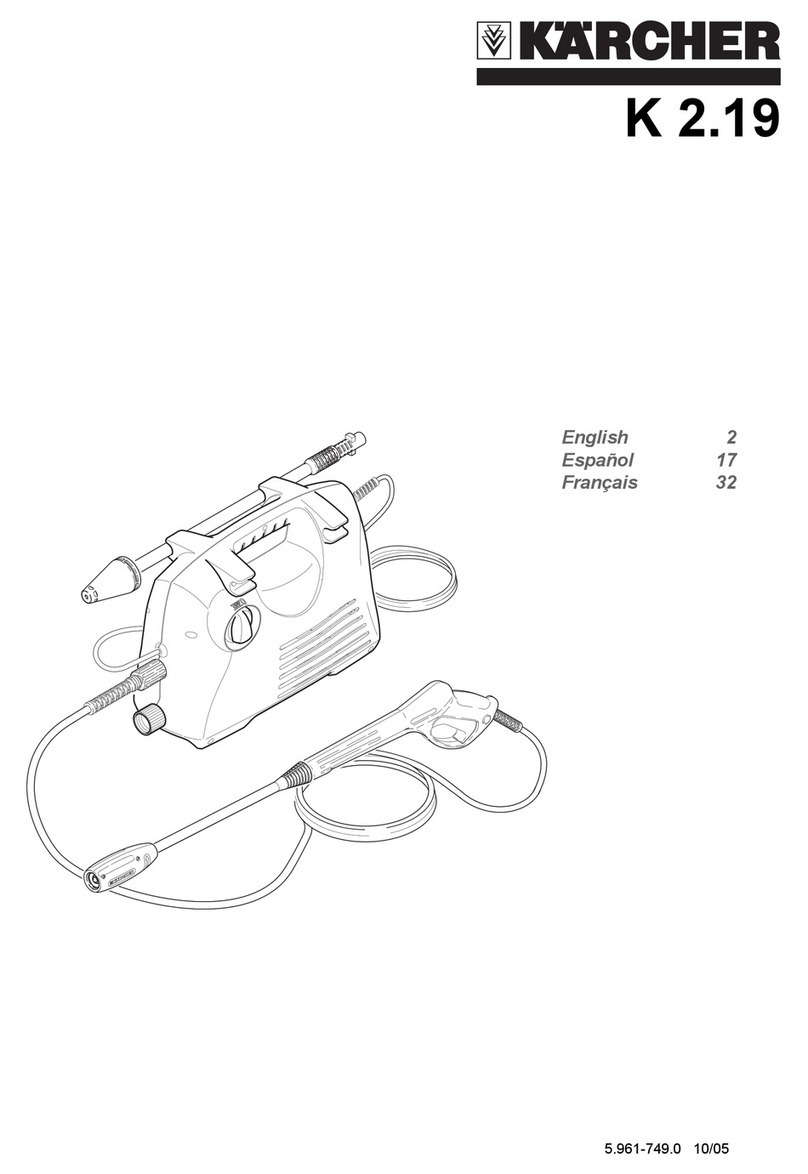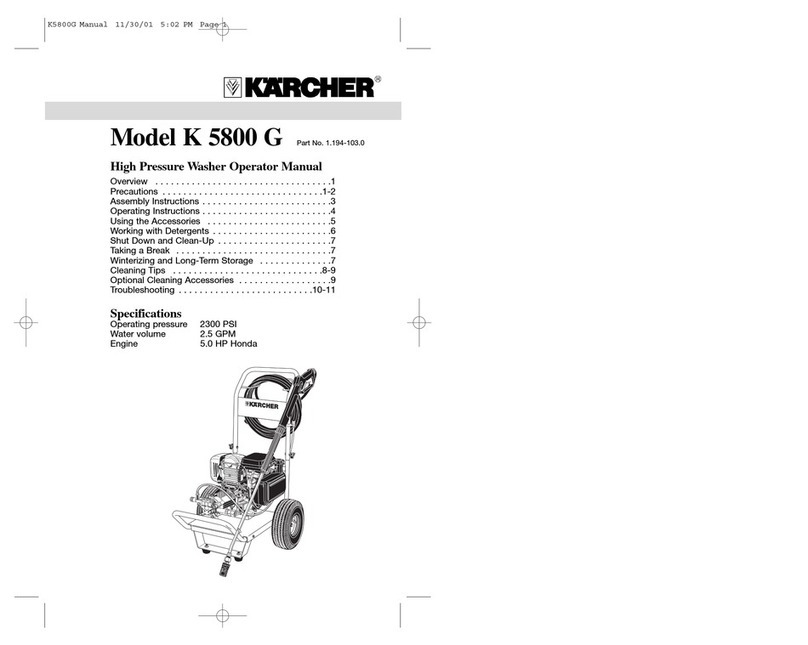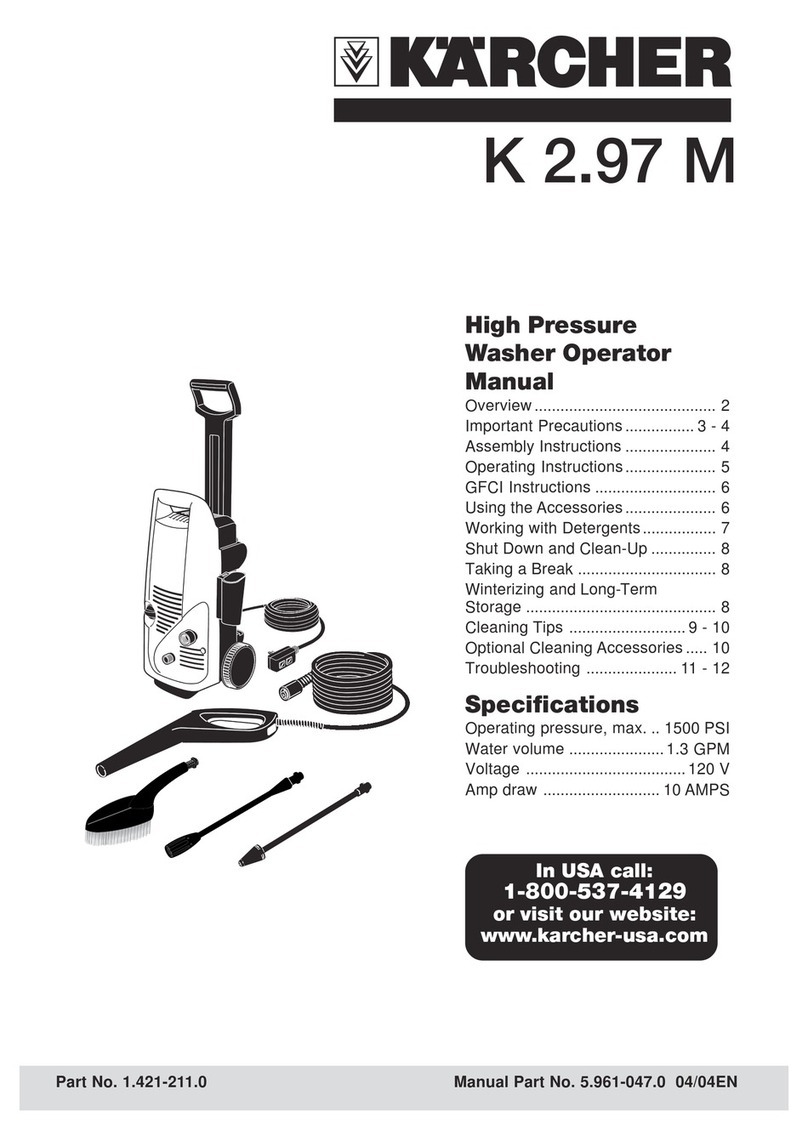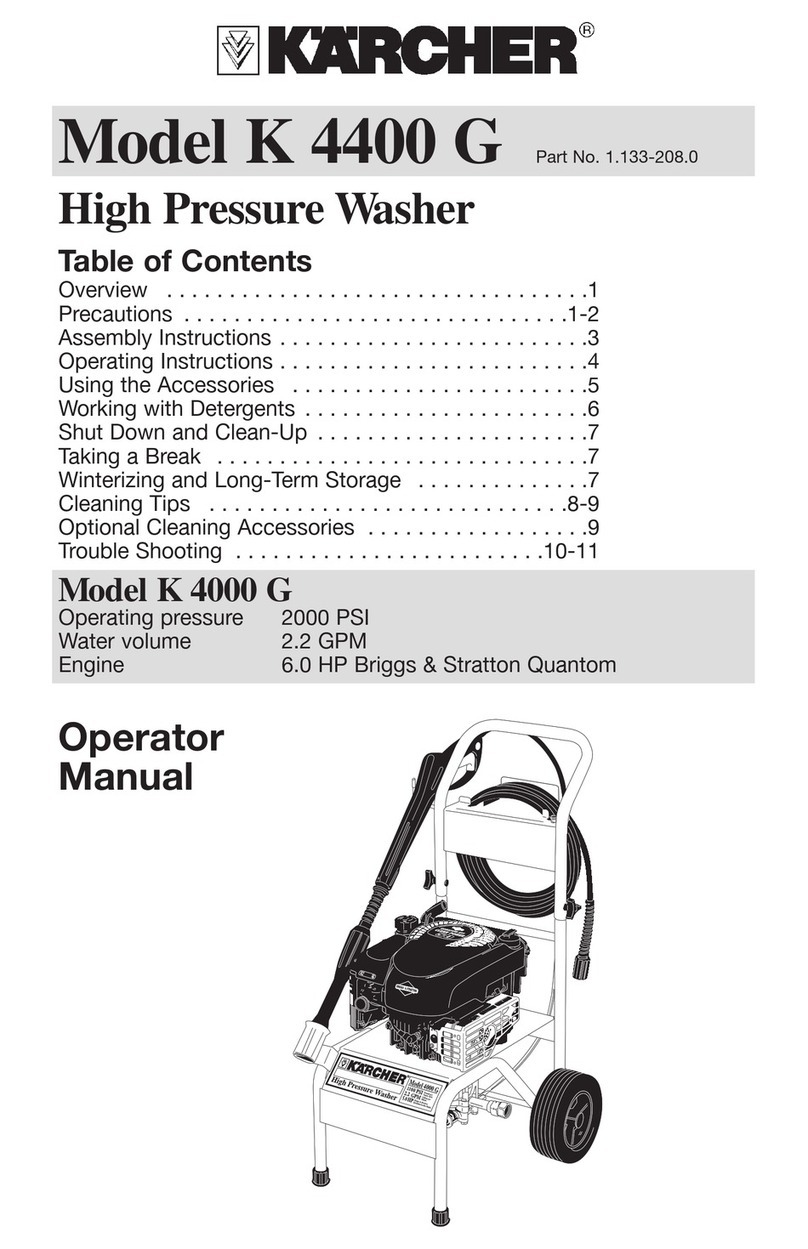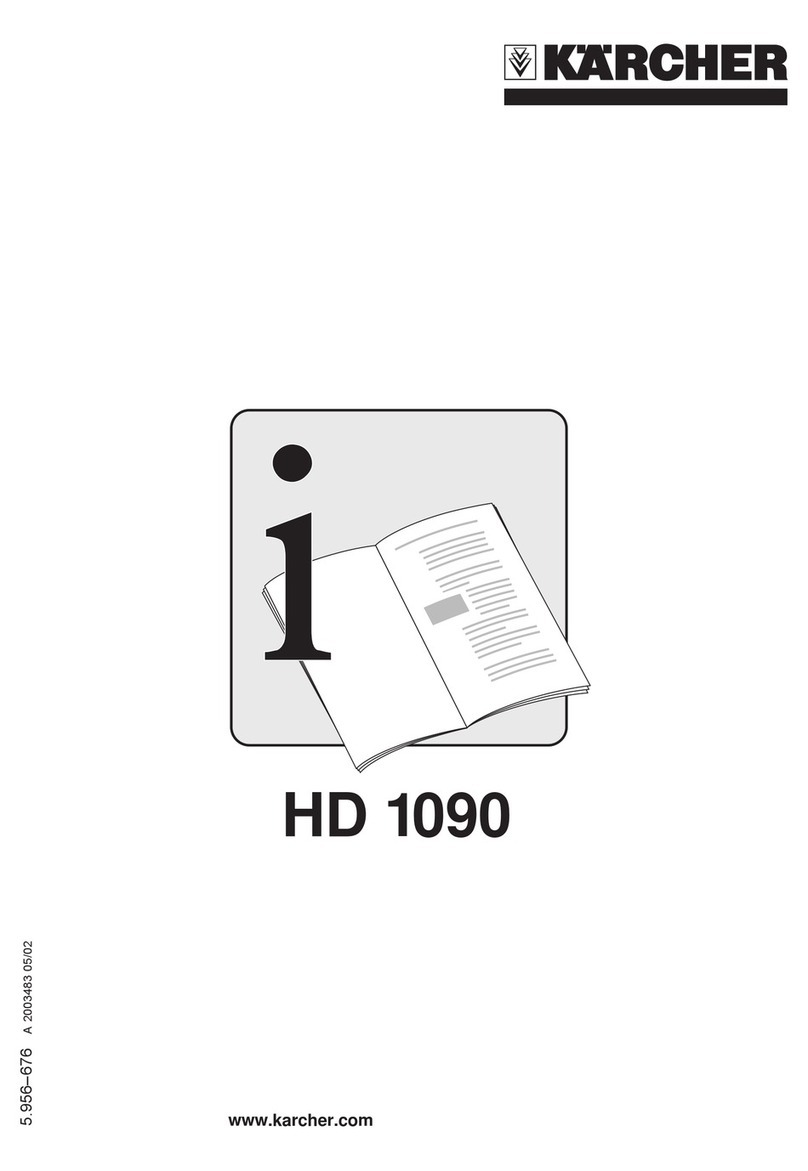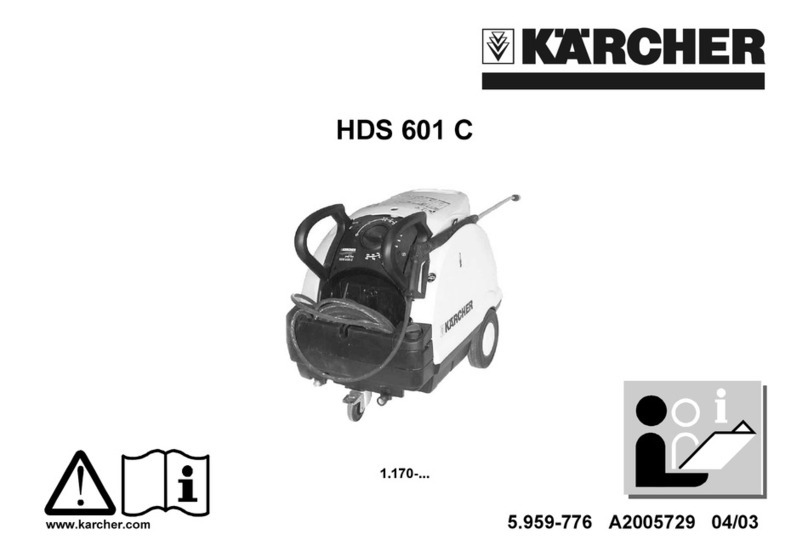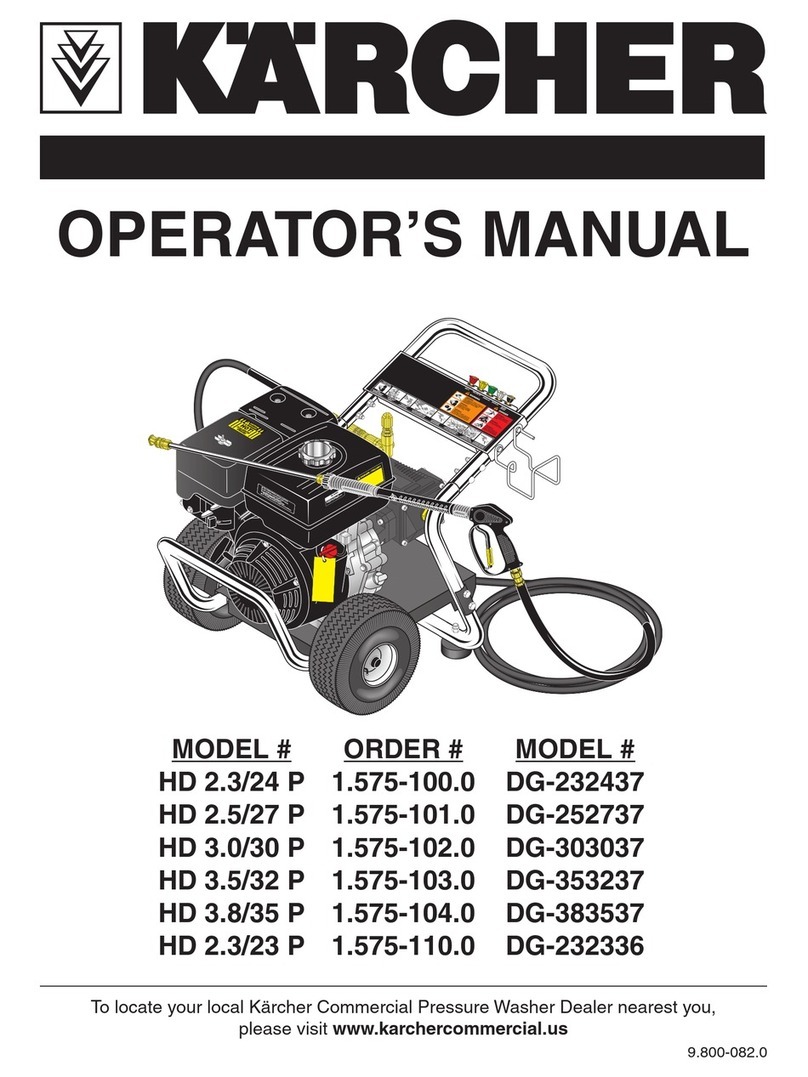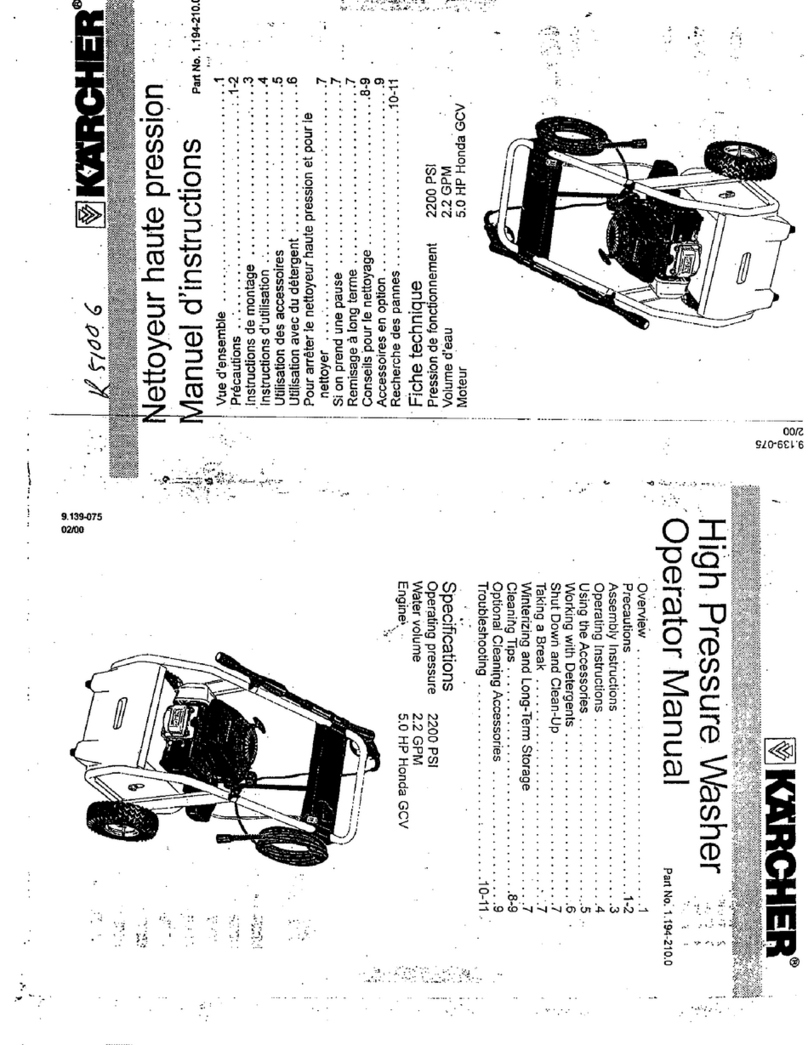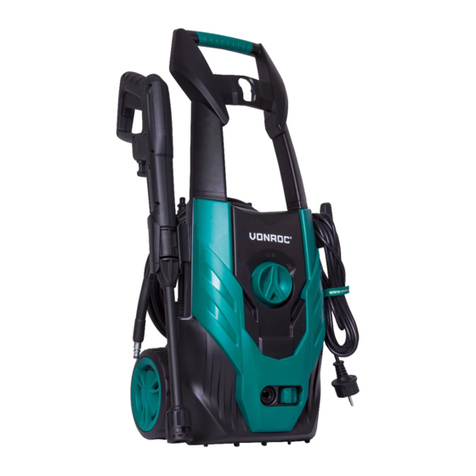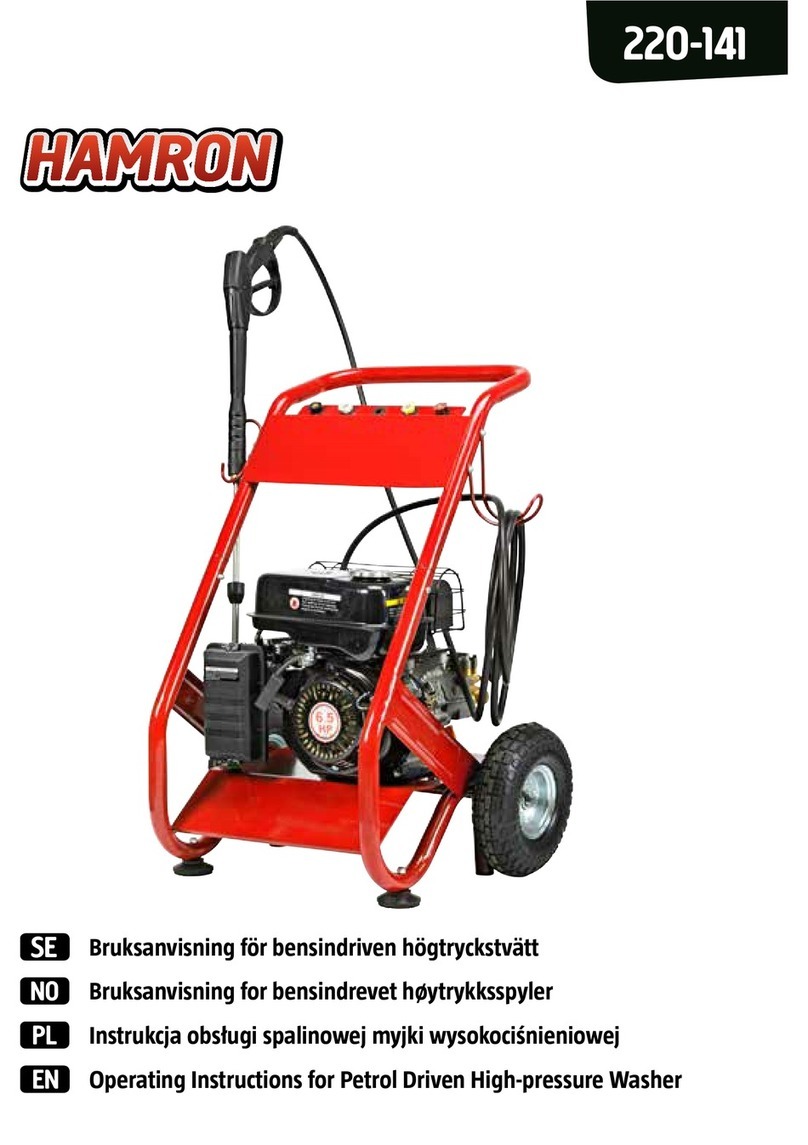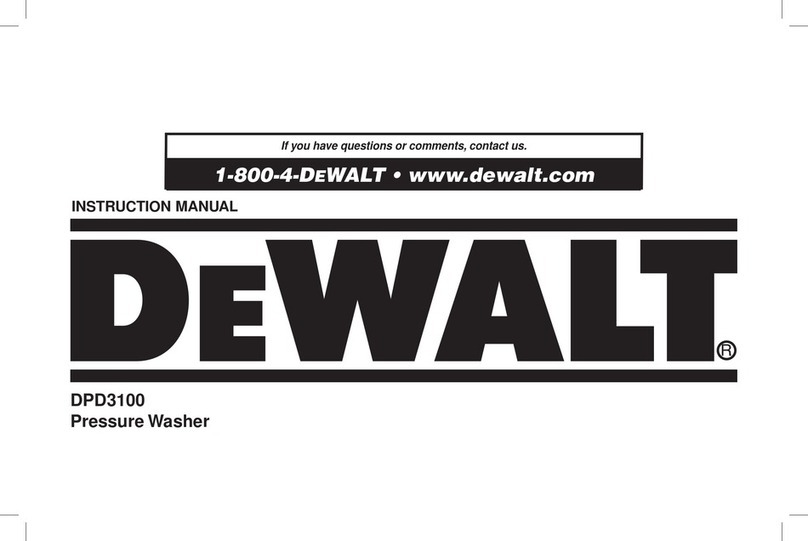4
I. I M P O R T A N T N O T E S
Before putting the unit into operation, please note the following points:
1. TRANSPORT
• If, while unpacking the unit, you discover that it has
become damaged during transport, please notify your
dealer or your Kärcher sales office.
2. SAFETY PRECAUTIONS
WARNING
•DO NOT RUN unit in an enclosed area. Exhaust gases
contain carbon monoxide, an odorless and deadly
poison.
• DO NOT check for spark with spark plug or spark plug
wire removed. use an approved tester.
• DO NOT CRANK unit with spark plug removed. If unit
is flooded, place throttle in "FAST" position and crank
until unit starts.
• DO NOT SMOKE when filling the gasoline tank.
•DO NOT FILL gasoline tank while engine is running.
Allow engine to cool down for two minutes before
refueling.
•DO NOT OPERATE the unit when an odor of gasoline
is present or other explosive conditions exists.
•DONOTOPERATE theunitifgasolineisspilled.Move
the unit away from the spill and avoid creating any
ignition until the gasoline has evaporated.
•DO NOT STORE, spill or use gasoline near an open
flame or any equipment such as a stove, furnance,
water heater, which utilize a pilot light or devices which
can create a spark.
•DO NOT REFUEL indoors where area is not well
ventilated. Outdoor refueling is preferred.
•DO NOT OPERATE unit without a muffler. Inspect
periodically and replaced if necessary.
•DO NOT USE the unit on any forest covered, brush
covered or grass covered unimproved land unless a
spark arrester is installed on the muffler.
• DO NOT RUN unit with air cleaner or air cleaner cover
removed.
• High pressure jets can be dangerous if subject to
misuse. The jet must not be directed at persons,
animals,live electrical equipmentor the machineitself.
This machine has been designed for use with deter-
gents supplied or recommended by the manufacturer.
Theuse ofother detergents orchemicals mayaffect its
safety.
CAUTION
• Before starting for the first time fill the engine with oil
1.25 pt. (0,6 l). DO NOT overfill.
• DO NOT RUN unit at excessive speeds, as this may
result in injury.
• DO NOT TAMPER with governor springs, governor
links or other parts which may increase the governed
engine speed.
• DO NOT TAMPER with the engine speed selected by
the original equipment manufacturer.
• DO NOT TOUCH hot mufflers, cylinders or fins as
contact may cause burns.
• DO NOT PLACE hands or feet near moving or rotating
parts.
• DO PULL starter cord slowly until resistance is felt.
Then pull cord rapidly to avoid kickback and prevent
hand or arm injury.
• DO USE fresh gasoline. Stale gasoline can cause
leakage.
• TO PREVENT ACCIDENTAL STARTING when ser-
vicing the unit or equipment, always remove the spark
plug or wire from the spark plug.
• At temperatures below freezing the unit could be
severely damaged if not completely emptied of water.
• A spark arrester must be added to the muffler of this
engine if it is to be used on any forest covered, brush
coveredorgrasscoveredunimprovedland.Thearrest-
er must be maintained in effective working order by the
operator.IntheStateofCaliforniatheaboveisrequired
bylaw(Section4442oftheCaliforniaPublicResources
Code). Other states may have similar laws. Federal
lawsapplyon federallands.Seeyour Briggs&Stratton
Authorized Service Center or equipment dealer for
spark arrester muffler options.
In the interest of environment
A muffler which leaks because of rust or damage can
permit an increased exhaust noise level. Therefore,
examinethemufflerperiodicallytobesureitisfunctioning
effectively. To purchase a new muffler, contact any
Briggs & Stratton Authorized Service Center for correct
replacement.

